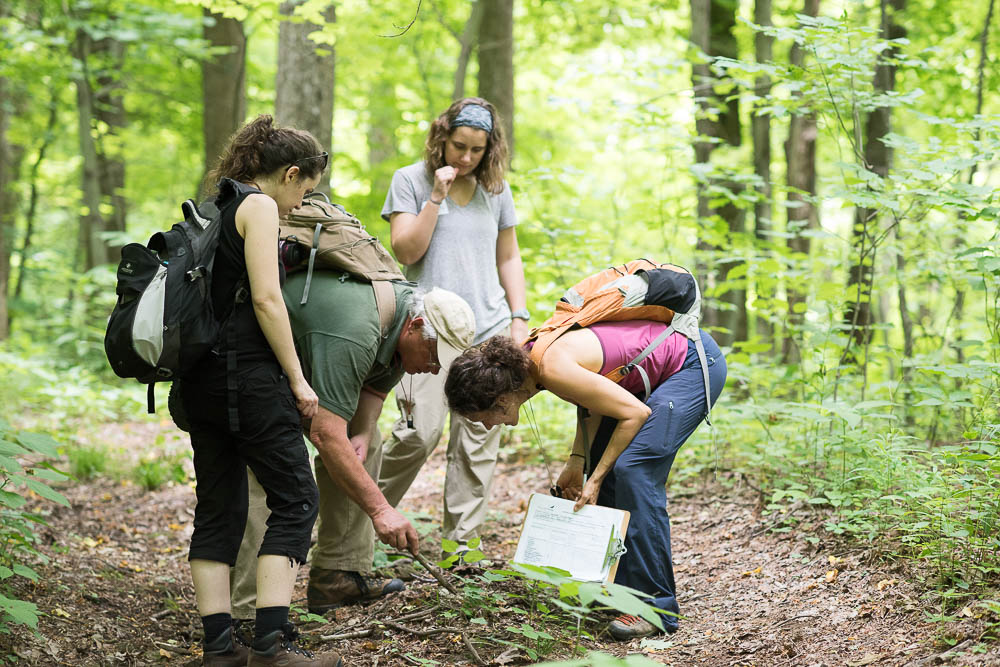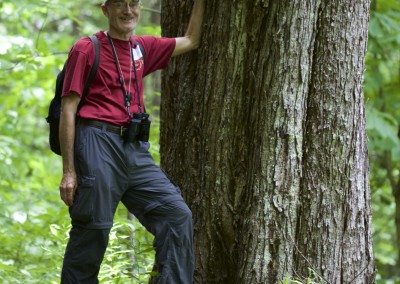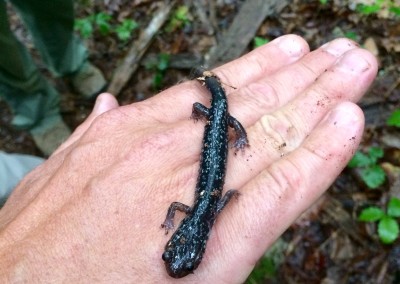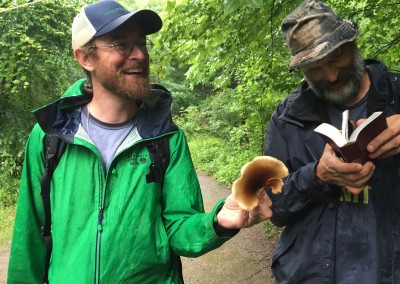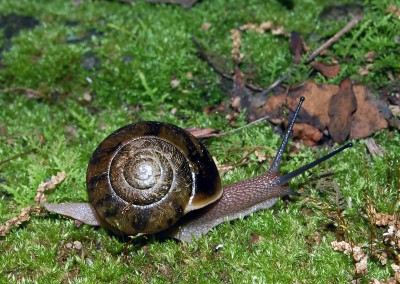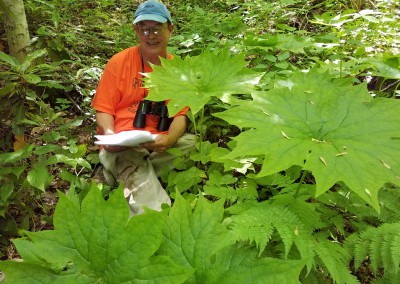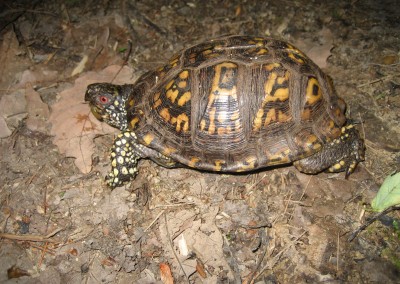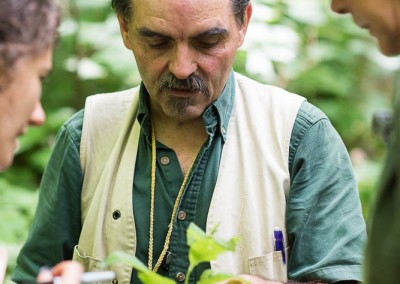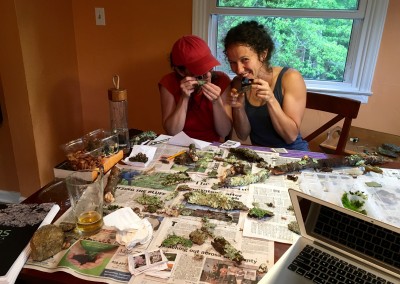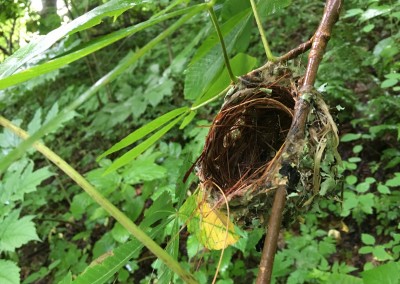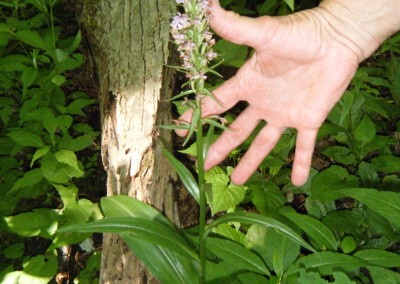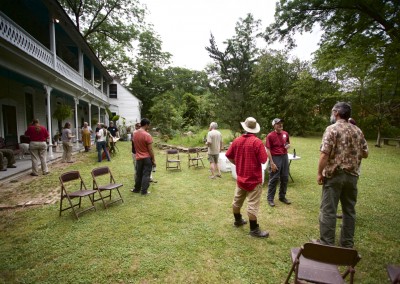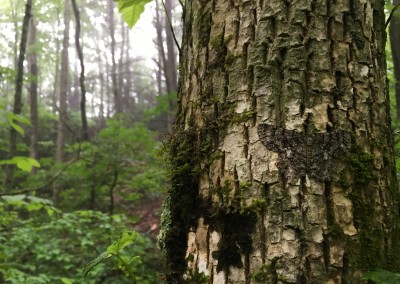Public And Scientists Document Diversity Of Bluff Mountain During Bioblitz
By Josh Kelly, MountainTrue Public Lands Field Biologist
On June 4 and 5, MountainTrue Staff and 43 volunteers documented the astonishing diversity of Bluff Mountain in Madison County, NC. Bluff Mountain has long been an iconic place to local residents who have hunted and gathered food and medicinal herbs on its slopes for generations. The music festival of the same name was started to celebrate the mountain and protect it from a legislative order in 1994 by former Congressman Charles Taylor that mandated two million board feet of timber be cut from the Mountain.
A coalition of local residents prevailed over Congressman Taylor so that only sustainable timber harvests occurred; much of Bluff Mountain, including several miles of the Appalachian Trail, remains a remote and wild place. The Bluff Mountain Timber Sale resulted in the Catpen Stewardship Project and the construction of two loop trails: The Betty Place Loop and The Bluff Mountain Loop. These trails provided good access to the north side of the mountain for bioblitzers.
The Bluff Bioblitz included participation by 11 professional biologists from Mars Hill University, UNC-Asheville, Catawba Valley Community College, the National Park Service, the National Forest Service, and MountainTrue. Professional biologists acted as group leaders and were assisted by citizen scientists of all levels of knowledge. The result was a great learning environment and the documentation of over 400 species, including over 270 vascular plants, a dozen mosses and liverworts, more than 30 birds, over 40 lichen, five mammals, six amphibians, and more than 50 invertebrate animals in just two days! Following Saturday’s activities, there was a lively social hosted by Elmer Hall and the Sunnybank Inn, longtime supporters of conservation in Western North Carolina.
The scientific information documented during the Bioblitz is very valuable. Several populations of rare species were documented, including what is possibly North Carolina’s most extensive population of heart-leaf hedge nettle (Stachys cordata), which is known from just four locations in the state. The rare brown creeper (Certhia americana), a northern disjunct that requires mature, rich forests with large diameter trees was also documented. Continuing the theme of northern disjuncts, Lichenologist Laura Boggess of Mars Hill University discovered a lichen that has not been recorded south of Canada. Despite being so dear to local people, who always knew what a rich place the mountain was, there had been only one study of the biological diversity of Bluff Mountain prior to the Bioblitz, and it focused on the Appalachian Trail corridor back in 1993.
Ecologist Mary Sauls Kelly pointed out that Bluff Mountain is one of the highest peaks in Madison County. “The way it rises up above the French Broad Valley, it’s a lot like a sky island,” said Kelly. Retired Mars Hill University professor Alan Smith said, “These are very nice woods. Bluff Mountain has a lot in common with other biodiversity hotspots in the Blue Ridge Mountains.” The bedrock geology of Bluff weathers to form dark and rich soils. Unlike many areas in these mountains, Rhododendron and mountain laurel don’t dominate the hollows, ridges, and slopes of Bluff. Instead, most of the mountain is carpeted with the emerald green of a dense herbaceous layer that puts on a show during the spring wildflower bloom.
The Hot Springs Mountain Club and MountainTrue have proposed Bluff Mountain for backcountry management in the ongoing Nantahala-Pisgah Forest Plan Revision. National Forests are required to revise their management plans every 10-20 years and the Nanthala-Pisgah has had the same plan since 1994. A backcountry designation would be compatible with the Appalachian Trail and would continue to provide the habitat needed by bear, brown creepers and rare species that call Bluff Mountain home. Backcountry management for places like Bluff would also prevent a repeat of the conflict seen in the 1990s and allow the Forest Service to increase the pace and scale of restoration on the parts of the Nantahala-Pisgah that need it most.
While the weather could have been drier–It rained on us on Sunday–, everyone agreed that the Bluff Bioblitz was a success. Pairing participants with various areas of expertise and skill levels ensured that everyone learned a lot and also had a good helping of fun. MountainTrue plans to hold an annual bioblitz as part of its Forest Keeper program, and Bluff Mountain is a great place to for people to learn, make friends, and contribute to the scientific knowledge about one of the little-known jewels of the Blue Ridge.

